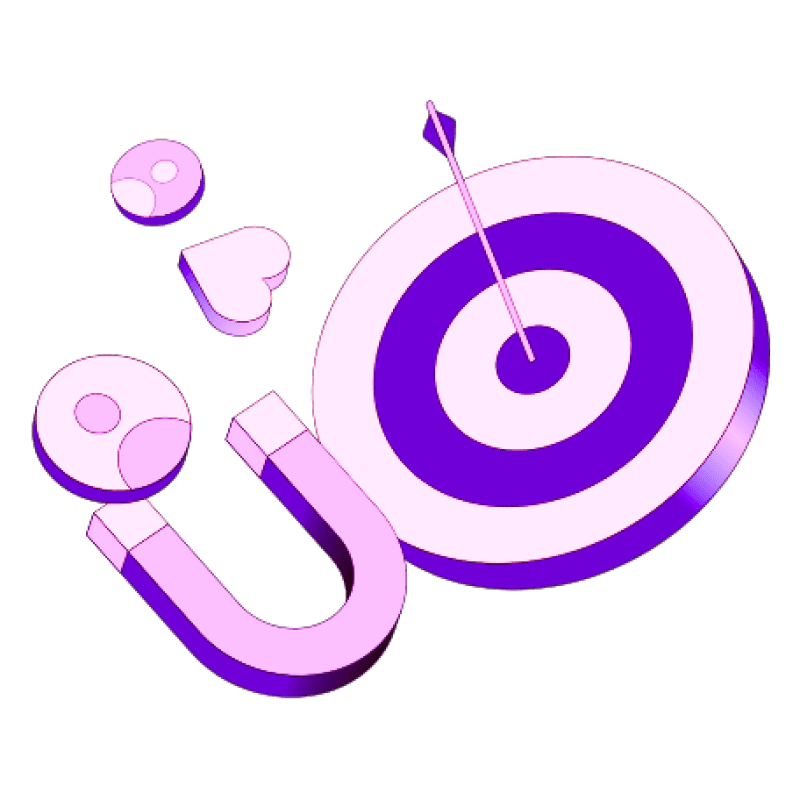Blogs
Articles

10 Outbound Sales KPIs to Track for Better Sales Performance
Outbound sales KPIs generate 55% of all leads, while inbound sales account for just 27%. This impressive statistic stands in stark contrast to a concerning fact - only 13% of customers feel their salespeople understand their needs.
Our guide breaks down the 10 essential outbound sales KPIs. These metrics range from your customer acquisition costs to conversion rates and will reveal your outbound sales strategy's strengths and weaknesses.
Sales managers and outbound representatives can use these KPIs to enhance their performance and secure more deals.
What Are KPIs in Outbound Sales?
KPIs form the foundations of sales strategies that work. KPIs in sales help teams measure and track their performance against specific time-bound goals. These indicators differ from regular metrics because they connect directly to preset goals and show how well sales teams meet their objectives.
Definition of KPI in sales
Sales KPIs turn raw numbers into business metrics that measure how well people, departments, or companies perform against their goals. They show whether your sales activities deliver results or need adjustment. Remember that KPIs don't represent sales targets - they measure activities that affect business outcomes.
Outbound sales KPIs measure how sales teams reach out to potential customers. This differs from inbound sales KPIs, which track responses to leads that marketing efforts generate.
Sales KPIs typically fall into two categories:
Activity goals - Your team's actions, like making more original calls to specific buyer personas
Performance-based goals - Results you achieve, such as growing annual sales revenue by a set percentage
Why outbound sales metrics matter
Sales leaders need to track outbound KPIs because they reveal more than simple metrics like meetings or revenue. These numbers help them understand how well their processes deliver results. Companies that don't track properly risk falling short, wasting resources, and missing growth opportunities.
Outbound sales metrics prove valuable because:
Evidence-based decisions - KPI tracking helps sales teams set realistic targets and fine-tune their strategies. One expert said it best: "If you can't measure it, you can't improve it".
Better resource use - Your company loses money when outbound sales representatives spend time on activities that don't pay off. The right KPIs show which sales activities bring the best results and where teams need to improve.
Clear performance picture - Sales KPIs let managers see how team members perform, especially when teams work in different locations. This transparency creates healthy competition naturally.
Shared goals - KPIs ensure everyone focuses on metrics that drive company growth, rather than having different reps chase different targets or leaders defining success differently than their teams.
Reliable outcomes - Understanding what works and what doesn't helps you build an outbound sales process that delivers consistent revenue quarter after quarter.
1. New Business Revenue
New business revenue stands at the top of significant outbound sales KPIs. It measures the core team's success in generating income from first-time buyers. Live visibility into your outbound sales machine shows how well it works and turns prospects into paying customers.
How to calculate it
You need to separate first-time buyer revenue from your overall sales figures to calculate new business revenue. The simple formula looks like this:
New Business Revenue = Number of Units Sold × Average Sales Price
Outbound sales teams should only include deals from proactive outreach efforts in this calculation. They must leave out inbound leads or referrals. Most successful companies want around 30% of total revenue to come from first-time buyers.
To assess this metric properly:
Identify all new customers acquired through outbound activities
Calculate the total revenue generated from these customers
Compare this figure to your overall revenue
Track month-over-month and quarter-over-quarter trends
Breaking down this KPI by sales representative, territory, or product line helps identify which segments bring in the most new business.
Why it reflects outbound success
New business revenue shows outbound success in several ways. We focused on showing the team's skill at prospecting, connecting with decision-makers, and turning cold leads into paying customers.
A Crunchbase analysis revealed that SaaS organizations without outbound strategies like cold calling grow 42% slower than those who use them. New business revenue indicates whether your outbound activities produce meaningful results.
This KPI helps you understand:
Your targeting and list building effectiveness
Your outreach messaging and value proposition quality
Your sales team's conversion rate from conversations to opportunities
Your sales pipeline's overall health
New business revenue helps create predictable revenue generation. Expert studies show a well-laid-out outbound sales program takes 6-12 months to generate steady revenue. This KPI lets you check if you're hitting the right marks during this time.
B2B companies often see outbound sales revenue follow a predictable pattern after the initial setup. One company landed a $180,000 annual recurring deal in their ninth month of outbound efforts. Another secured a $1,000,000 deal in their eighteenth month.
2. Projected Pipeline Value
Projected pipeline value serves as a crucial forward-looking outbound sales KPI. This metric measures potential revenue from all deals in your sales funnel and provides a snapshot of future earning potential based on deals at various completion stages.
Formula and tracking tips
The simple formula to calculate projected pipeline value works like this:
Projected Pipeline Value = Deal Value × Probability of Closing
Your team needs a detailed assessment by adding up forecasted values of all active deals:
Assign probabilities to each deal based on its stage in the sales process
Multiply each deal's value by its probability percentage
Add up all weighted values to get your total projected pipeline value
Historical data should guide your probability assignments. Deals become more likely to close as they move through pipeline stages. To name just one example, you might assign these percentages based on your sales stages:
Prospecting: 10%
Lead qualification: 25%
Trial: 50%
Proposal: 60%
Negotiations: 75%
Here's a practical example: Your pipeline has a $100,000 deal at prospecting stage, a $50,000 deal in qualification, and a $60,000 deal in negotiations. The projected pipeline value would be ($100,000 × 10%) + ($50,000 × 25%) + ($60,000 × 75%) = $10,000 + $12,500 + $45,000 = $67,500.
Sales teams should track this KPI monthly as a monetary amount of potential revenue expected to close within a specific timeframe—such as $250,000 within the next six weeks.
How it helps prioritize deals
Projected pipeline value enables sales teams to make strategic decisions about resource allocation. Each potential chance uses your most valuable resource—time. Making the most of each opportunity boosts your conversion success.
This metric helps teams focus on deals with the highest potential return. Not all chances carry equal weight, so understanding their relative value lets your team distribute efforts wisely.
The predictive power of projected pipeline value leads to better forecasting. Companies with accurate sales forecasting grow their revenue year over year 10% more often. Teams can set realistic targets and distribute resources effectively with this insight.
3. Outbound Sales Growth
Tracking outbound sales growth shows how well your sales team performs over time. This metric shows how much revenue your representatives bring in through active sales during specific periods. Your KPI quickly flags potential problems in your sales pipeline when growth slows down.
Measuring growth over time
Outbound sales growth shows how well your team increases revenue compared to earlier periods. The formula is simple:
Outbound Sales Growth = (Current Period Sales - Previous Period Sales) / Previous Period Sales
To cite an instance, if your team generated $200,000 in outbound sales this quarter compared to $150,000 last quarter, your growth rate would be: ($200,000 - $150,000) / $150,000 = 33.3%
Sales leaders usually track this KPI monthly as a baseline. You should also keep an eye on quarterly and annual trends. Looking at multiple timeframes helps you tell normal ups and downs from worrying patterns in your outbound sales metrics.
Here's how to make it work:
Separate outbound revenue from inbound channels
Establish consistent measurement periods
Compare similar timeframes (e.g., Q1 this year versus Q1 last year)
Set realistic growth targets based on historical performance
This KPI works like an early warning system. It tells you when you don't have enough qualified leads, your conversion rates drop, or your average deal sizes shrink.
Linking growth to outbound strategy
Your outbound sales strategy directly shapes your outbound sales growth. This metric helps you understand how different sales tactics work and which ones strike a chord with your target audience.
This KPI gives you a deeper look at your sales process by showing:
Which outreach methods boost revenue growth most
How message changes affect conversion rates
Whether new territories or market segments show good returns
How each outbound sales rep adds to overall growth
4. Number of Phone Calls
Cold calling is the life-blood of any effective outbound sales strategy. Your team's prospecting efforts and sales pipeline bottlenecks become visible when you track phone call metrics.
Tracking call volume
The number of outbound calls your sales team makes shows their productivity and how much they participate. This basic activity indicator varies by industry and sales context. Sales representatives should make 80-150 calls daily in high-volume cold calling scenarios. Complex sales might need only 20-50 calls per day.
You should never assess call volume by itself. Its real value shows up when you analyze it with conversion metrics and other outbound sales KPIs. To cite an instance, if Rep A makes twice as many calls as Rep B but closes fewer deals, quality issues might be the cause rather than lack of effort.
Fail rate and appointment rate
The fail rate shows how many contacts were unreachable or didn't answer compared to total call attempts. This KPI for sales representatives helps you learn about the quality of your prospecting lists and calling strategy. Here's how to calculate the fail rate:
Fail Rate = Number of Calls Made / Number of Contacts Made
The appointment rate is just as crucial. It shows how well your calls turn into scheduled meetings. This metric reflects your outbound sales rep's knowing how to generate interest. The calculation is:
Appointment Rate = Number of Appointments Scheduled / Number of Contacts Made × 100
A high appointment rate points to effective outreach and qualifying techniques. B2B sector's excellent appointment-setting rate typically ranges between 15-20%.
Average call duration
The quality of your team's prospect conversations shows in their average call duration. Poor opening statements or immediate rejection often lead to short calls under 60 seconds. Inefficient conversations might drag on too long.
Average call duration highlights which representatives need coaching. Cold calling conversations should last 2-5 minutes - enough time to generate interest and schedule next steps. Demos or discovery calls usually need 15-20 minutes to qualify prospects properly.
This metric helps you spot representatives who spend too much time on non-converting calls or rush through valuable conversations. You can streamline processes in your outbound calling strategy by analyzing this data with other sales KPIs and metrics.
5. Email Outreach Metrics
Email outreach forms the foundation of any strong outbound sales strategy. Sales teams can't work effectively without tracking how their emails perform. Let's get into the metrics that light up email effectiveness.
Open rate
Average email open rates in various industries hit about 42.35% by 2025. Notwithstanding that, this metric has lost reliability. Most receiving domains now scan messages automatically to check threats, which shows an "open" even without human interaction. This auto-scanning makes open rates less dependable to measure actual participation.
Open rates between 30-45% are solid and anything above 50% is outstanding. But focusing only on opens can mislead you. Some B2B sectors call 25% a soaring win. These rates help spot potential delivery problems when tracked over time.
Response rate
Response rate gives you a better picture than opens because it shows recipients actually saw and acted on your message. Replies prove your email appealed enough to make someone take action.
Cold outbound emails should aim for reply rates above 15%, while top performers reach 40-50%. Most campaigns land between 5-12%, with average response rates falling between 1.5% and 4.89%. Note that you should distinguish between positive replies showing interest and negative ones when looking at this metric.
Bounce rate
Your bounce rate measures how many emails never made it to inboxes. The standard sits at 2%, with rates between 2-5% needing attention and anything above 5% calling for quick fixes.
Bounces come in two types:
Soft bounces: Short-term issues like full inboxes or server problems
Hard bounces: Permanent problems including invalid addresses or domains
Email lists decay at 25.74% yearly, so regular validation is vital—experts say to verify emails every quarter at least. Bad bounce rates hurt sender reputation and can create delivery problems in future campaigns.
Appointment rate from emails
The appointment rate from emails ended up being the most valuable outbound sales KPI here. This shows how many meetings your email campaigns set up—the true measure of outbound email success.
Standard appointment booking rates usually fall between 1-3%, which shows how hard it is to convert cold prospects. Personalized emails work better by a lot, getting three times more responses (17% vs. 7%).
Follow-up emails are a great way to get better results. The first follow-up can boost reply rates up to 49%, which proves persistence pays off in outbound outreach. But watch those spam complaints carefully since they go up with each extra follow-up.
6. Outbound Conversion Rate
Your outbound conversion rate shows the real picture of your sales process. It reveals your lead quality and how well your sales approach works. This key outbound sales KPI shows what percentage of your outbound leads become customers or qualified opportunities. We use it to check if our prospecting efforts reach the right people with the right message.
Here's a simple way to find your outbound conversion rate: Number of Closed Deals ÷ Total Lead Opportunities × 100. This calculation shows how well your sales funnel performs.
Different industries have different conversion rates:
B2C Sales: Average (1%-3%), Good (3%-5%), Excellent (5%-8%)
B2B Sales: Average (2%-5%), Good (5%-10%), Excellent (10%-15%)
Warm Leads: Average (8%-12%), Good (12%-20%), Excellent (20%-30%)
Enterprise Sales: Average (5%-8%), Good (8%-12%), Excellent (12%-20%)
What it tells about lead quality
Your conversion rate shows how good your leads are. High rates mean you're finding prospects who really want to buy. Looking at this metric helps you see if your lead generation brings in qualified prospects or wastes resources on leads that don't fit.
When conversion rates drop, you might have targeting issues, poor outreach, or weak messaging. Your outbound sales strategy might need adjustments to match your ideal customer's profile better.
Studies show that only 2% of website visitors convert on their first visit. Looking at conversion patterns helps you identify which outbound sales techniques bring the best leads and which audience segments respond most.
How to improve it
Start by getting to know your ideal customer really well. Build detailed buyer personas that show their pain points, goals, and how they make decisions. Set up a reliable lead scoring system that ranks prospects based on their conversion potential.
Tailored content makes a big difference—personalized emails get 3× more responses than generic ones (17% vs. 7%). Making your sales process smoother removes obstacles that might stop potential customers.
7. Number of Offers Sent
Your outbound sales KPIs arsenal should include tracking the number of offers sent as a key measure. Sales representatives make calls and emails to generate appointments that should end with formal offers to potential customers. This metric connects activity-based KPIs with revenue-generating outcomes.
Offer rate formula
The offer rate formula helps you assess how well your team converts appointments into real opportunities:
Offer Rate = Number of Offers Sent / Number of Appointments Scheduled × 100
This calculation shows how well your representatives turn meetings into concrete proposals. Your team might schedule 50 appointments last month but send only 10 offers, which means a 20% offer rate. Such numbers could point to qualification problems in your sales process.
What it reveals about sales readiness
The number of offers sent is a vital sign of sales readiness and shows how prepared your team is to move prospects through the pipeline. We tracked this metric to see if representatives qualify the right leads, deliver compelling pitches, and give proper consultation to potential customers.
Your team's offer numbers compared to calls, emails, and meetings clearly show if they're reaching the right people and creating valuable opportunities. High activity numbers but low offer rates usually mean targeting problems or poor qualification processes.
8. Hit Rate
Outbound sales KPIs show that hit rate stands out as a key metric that shows closing success. Sales teams often call it the win rate - a percentage that reveals how many outreach attempts turn into closed deals.
Definition and formula
Hit rate in outbound sales shows the relationship between successful sales and total prospects contacted. Teams express this metric as a percentage using this simple formula:
Hit Rate = (Number of Deals Closed / Total Number of Opportunities) × 100%
Call centers calculate their hit rate by dividing successful calls by appointments or sales made. Sales teams that track various outreach activities use this adjusted formula:
Hit Rate = (Number of Deals Closed / Total Number of Meetings or Calls) × 100%
Here's a simple example: A sales team works with 120 opportunities and closes 30 deals, which gives them a hit rate of 25%. This metric is different from general conversion rates because it focuses on wins from qualified opportunities rather than broader marketing sources.
Why it reflects outbound efficiency
Hit rate shows how well your outbound sales team performs. We measured how successfully representatives turn potential customers into buyers. Teams with higher hit rates excel at communicating value and reaching the right prospects.
When you look at the numbers, successful B2B representatives achieve hit rates around 35%, while lower performers hover around 22%. These numbers highlight how hit rate helps identify successful sales techniques that teams can share and replicate.
9. Customer Acquisition Cost (CAC)
The cost of adding new customers to your business is a simple outbound sales KPI. Customer Acquisition Cost (CAC) shows how much you spend to convert prospects into customers and provides significant insight into your sales efficiency.
How to calculate CAC
The simple CAC formula divides your total acquisition expenses by the number of new customers gained in a specific period:
CAC = Total Sales and Marketing Costs ÷ Number of New Customers Acquired
Companies often calculate CAC too narrowly and only look at advertising costs. A complete formula should include:
Marketing campaign expenses
Sales and marketing team's salaries
Software and CRM tools
Professional services
Overhead costs related to acquisition
Let's look at a real example. Your marketing manager earns $45,000 annually and you spend $20,000 on marketing to acquire 500 new customers. Your complete CAC would be ($45,000 + $20,000) ÷ 500 = $130 per customer. Looking at direct marketing costs alone would show just $40 per customer—this significantly underestimates your actual acquisition expenses.
Balancing CAC with CLV
Customer Lifetime Value (CLV) shows the total revenue a customer brings throughout their relationship with your business. The CLV:CAC ratio provides significant insight into your outbound sales efficiency.
The standard healthy CLV:CAC ratio is 3:1. Your business should generate at least three dollars in lifetime value for every dollar spent acquiring a customer. A ratio below 3:1 suggests unsustainable acquisition costs. Ratios above 5:1 might mean you're not investing enough in growth opportunities.
You can improve this ratio by focusing on two key components:
Decrease CAC through better targeting and optimized sales processes
Increase CLV by enhancing customer profitability and satisfaction
A sustainable outbound sales strategy needs ongoing evaluation of this significant metric. Outbound teams can calculate their specific CAC using: Outbound CAC = Total Cost of Outbound Sales ÷ Number of Customers Acquired through Outbound.
10. Customer Lifetime Value (CLV)
These ten outbound sales KPIs provide a detailed framework to evaluate and enhance your sales performance. Your team's effectiveness becomes visible at every stage of the sales process, from the original outreach to final conversion. A data-driven approach helps you identify the strengths and weaknesses in your strategy.
Outbound sales continues to drive revenue when done right. Success relies on balancing activity-based metrics like call volume and emails sent with outcome-based indicators such as hit rate and new business revenue. It also helps to maintain a healthy CLV:CAC ratio to keep your acquisition efforts sustainable long-term.
Conclusion
Data drives successful outbound sales teams. Picking and tracking the right metrics might feel daunting at first, but your bottom line will thank you for the effort. The evidence shows outbound sales remains crucial to successful sales organizations because it works. Outbound strategies account for 55% of generated leads compared to just 27% for inbound sales.
Becoming a data-driven sales organization isn't just helpful—it's crucial to survive in today's competitive digital world. Only 13% of customers believe salespeople truly understand their needs. Companies that excel use their KPIs to understand and address customer pain points effectively.
These ten KPIs act as your roadmap to outbound excellence. They turn guesswork into strategic decisions and help your team identify what works, what doesn't, and why. This knowledge helps you build an outbound sales process that delivers predictable revenue quarter after quarter.
Your team's reliable KPI framework that lines up with sales goals creates a culture of accountability and excellence. This results-focused mindset encourages representatives to own their performance while promoting a shared environment where everyone contributes to team goals.
Before making big changes to your outbound strategy, your KPIs must be specific, measurable, achievable, relevant, and timely (SMART). This structured approach keeps efforts focused on your main sales goals.
Your outbound sales performance will improve steadily as you fine-tune your approach based on real data instead of assumptions. Tools like Persana.ai can simplify this process with user-friendly dashboards that make KPI tracking straightforward and useful for sales teams of any size.
Note that proper KPI tracking goes beyond measurement—it's about ongoing improvement that turns your outbound sales from unpredictable to consistently successful.
Key Takeaways
Mastering outbound sales requires tracking the right metrics to transform guesswork into predictable revenue generation. These essential KPIs provide the data-driven insights needed to optimize your sales strategy and boost performance.
• Track revenue-focused metrics first - New business revenue and projected pipeline value directly measure your team's ability to generate income from outbound efforts
• Monitor activity and conversion together - Balance call volume and email metrics with conversion rates and hit rates to identify both effort and effectiveness gaps
• Focus on quality over quantity - A 35% hit rate from top performers versus 22% from underperformers shows that targeting the right prospects matters more than volume
• Maintain healthy unit economics - Keep your CLV:CAC ratio at 3:1 or higher to ensure sustainable growth and profitable customer acquisition

Create Your Free Persana Account Today
Join 5000+ GTM leaders who are using Persana for their outbound needs.
How Persana increases your sales results
One of the most effective ways to ensure sales cycle consistency is by using AI-driven automation. A solution like Persana, and its AI SDR - Nia, helps you streamline significant parts of your sales process, including prospecting, outreach personalization, and follow-up.



